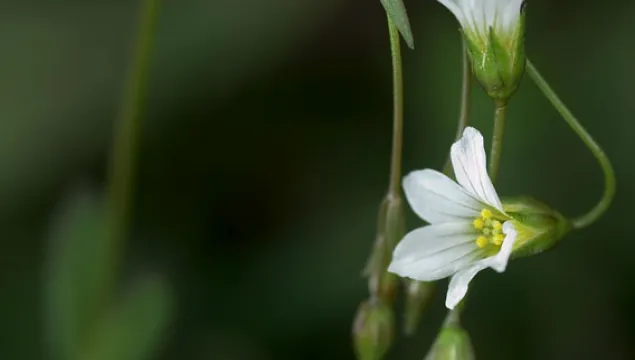Common sorrel
Common sorrel is a common plant of grasslands, woodland edges, roadside verges and gardens. It is also known as 'sour ducks' because its leaves taste tart.
Common sorrel is a common plant of grasslands, woodland edges, roadside verges and gardens. It is also known as 'sour ducks' because its leaves taste tart.
Look for the delicate, pink flowers of Common bistort in wet meadows, pastures and roadside verges. It is also known as 'Pudding Dock' in North England because it was used to make a dessert at Eastertime.
Introduced from Japan in the 19th century, Japanese knotweed is now an invasive non-native plant of many riverbanks, waste grounds and roadside verges, where it prevents native species from growing.
Despite its name, Common knotgrass is not a grass, but is actually related to the docks. It has wiry stems that grow along the ground, and is a weed of waste ground, gardens and arable fields.
Hairy bitter-cress is an edible weed of rocky places, walls, gardens and cultivated ground. Gathering wild food can be fun, but it's best to do it with an expert - come along to a Wildlife Trust event to try it.
Shepherd's purse is often considered a 'weed'. It produces a lot of seeds and can be found on cultivated and disturbed land, such as arable fields, tracks and gardens.
Horseradish is used as a well-loved condiment. This member of the cabbage family is actually an introduced species in the UK, but causes no harm in the wild.
The papery, translucent, silver 'coins' of Honesty are instantly recognisable. They are actually the leftover seed pods that dangle from the plant through winter.
A sure sign that spring has arrived, the Cuckooflower blooms from April. Look out for its delicate, pale pink flowers in damp meadows and ditches, and on riverbanks.
The dark-blue flowers of Common milkwort pepper our grasslands from May to September. It can also appear in pink and white forms.

A small and delicate plant of chalk grasslands, Fairy flax can be seen in bloom from May to September - look out for its nodding, white flowers.
The bill-shaped seed pods of Common Stork's-bill explode when ripe, sending the seeds flying! This low-growing plant has pretty pink flowers and can be seen on grasslands and coastal sands.